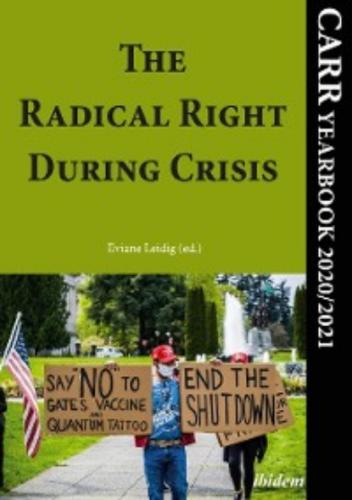The Radical Right During Crisis. Группа авторов
2020 did not mark the first time that incels have targeted Canada. In 2018, a man drove his van into pedestrians at a busy street in Toronto, later telling police that he belonged to an ‘incel rebellion’, but he failed to be charged with terrorism.5 The teenager who attacked the massage parlour knew about the Toronto attacker, but also about other key incel figures like Elliot Rodger. Rodger, who killed six people and injured fourteen at a California university campus before committing suicide in 2014, is probably the most well-known figure in the incel movement, to the point that experts have likened his position within the incel community to Anders Breivik’s regarding the wider radical right.6 He too, as Breivik, wrote a manifesto entitled “My Twisted World” in which he vowed revenge against women at sororities for refusing to have sex with him.7
There have been other similar attacks in Oregon (2015), New Mexico (2017), and Florida (2018 and 2019), leaving up to fifty dead in North America.8 Incels have been a target of arrests too: just earlier this year a man was arrested in California for harassing two girls online who had rejected his sexual advances.9 Terrorism experts Bruce Hoffman and Jacob Ware have warned that the terrorist threat from incels is very real and that it poses specific challenges to security forces, as attackers tend to plot alone and often do not belong to organized groups.10 Likewise, most of these conversations have moved to darker webs and less-policed sites like encrypted chat platform Telegram and gamer site Discord.11
In a sense, the incel movement is the ultimate expression of the decentralized nature of the wider radical right, down to the way the discourse is often driven by memes, jokes and “shitposting” on online forums and message boards. Therefore, banning or targeting a specific group is unlikely to yield success. As such, we require a multifaceted response that understands the nature of the incel threat and how it relates to the dynamics of the global radical right movement.
The difficulty of fighting diffuse ideologies: incels and the radical right
The manosphere—the umbrella term that brings together all misogynistic movements—includes not only incels, but men’s rights activists, “pick up artists”, and the so-called movement “Men Going Their Own Way (MGTOW)”, the latter of whom intentionally avoids contact with women.
The Hanau shooter, who in his manifesto said that he had a very high standard for choosing women and that he avoided entering into relationships with them because they were a “temptation”, was initially labeled an incel, although he was later better described as belonging to the MGTOW movement.12 Several experts on the subject of misogyny and the far-right have argued persuasively that labelling every misogynistic violent attack as incel only muddies the discussion about the consequences of misogyny as a whole.13
Even then, some voices have challenged that the Hanau shooter fit neatly into the MGTOW category, as he was also displaying strong paranoia and white supremacy sentiment.14 This debate over the different strands of the manosphere and how the borders between categories can be diffuse is illustrative of the wider difficulty in determining what is “radical right” or “white supremacy” and how that interlinks with other ideologies. Scholars Bruce Hoffman and Jacob Ware have noted how incel ideology is getting interwoven with typical white supremacist ideology, which can be emboldening for members of the incel movement.15 This can go on both directions, as several memes incorporating incel language and depicting terrorists like the Christchurch shooting as “Chads” made the rounds in online radical right forums in the aftermath of attacks last year.16
Aside from the porous borders between different strands in the radical right, other variables can further add to the confusion on what constitutes radical right ideology. There was a heated debate after the Hanau shooting on whether the mental illness aspect of the case disqualified it as a terrorist incident, which experts such as Cynthia Miller-Idriss found problematic for risking glossing over how people are being radicalized and the role of white supremacy ideology in this process.17
Many differing, and often contradictory, extremist movements are covered under the term “radical right”. From the manosphere to accelerationists, through anti-government patriot militias and anti-Muslim protest movements all the way to Russian ultranationalists and Satanic-inspired neo-Nazis; it is not always clear-cut that these movements share a common ideological ground. As such, the battle against a diffuse threat with no clear leaders and high levels of infighting ends up being reactive and fails to keep up with how the threat develops.
Yet, seeing as how the incel threat continues to wreak havoc, it is imperative that we start to understand more about how terrorism materializes in the radical right, including what ideological trends are connected to acts of violence, how do strands relate to each other, and how attackers radicalize and mobilize for action.
Cristina Ariza is a Policy and Practitioner Fellow at CARR and an analyst at the Tony Blair Institute for Global Change.
1 Stewart Bell, Andrew Russell and Catherine McDonald, “Deadly Attack at Toronto Erotic Spa Was Incel Terrorism, Police Allege,” Global News, May 19, 2020, https://globalnews.ca/news/6910670/toronto-spa-terrorism-incel/.
2 Joana Cook, “Incels,” Global Network on Extremism & Technology Insights, January 20, 2020, https://gnet-research.org/2020/01/20/incels/.
3 Zack Beauchamp, “Our Incel Problem,” Vox, April 23, 2020, https://www.vox.com/the-highlight/2019/4/16/18287446/incel-definition-reddit.
4 Beauchamp, “Our Incel Problem”.
5 Bell, Russell and McDonald, “Deadly Attack at Toronto Erotic Spa Was Incel Terrorism, Police Allege”.
6 Colin Clarke and Lilianna Turner, “The ‘Incel’ Ideology Continues to Build a Strong Following in the Online ‘Manosphere’,” Global Network on Extremism & Technology Insights, April 22, 2020, https://gnet-research.org/2020/04/22/the-incel-ideology-continues-to-build-a-strong-following-in-the-online-manosphere/.
7 “Elliot Rodger: How Misogynist Killer Became ‘Incel hero’,” BBC News, April, 25, 2018, https://www.bbc.co.uk/news/world-us-canada-43892189.
8 Bruce Hoffman and Jacob Ware, “Incels: America’s Newest Domestic Terrorism Threat,” Lawfare, January 12, 2020, https://www.lawfareblog.com/incels-americas-newest-domestic-terrorism-threat.
9 Bell, Russell and McDonald, “Deadly
